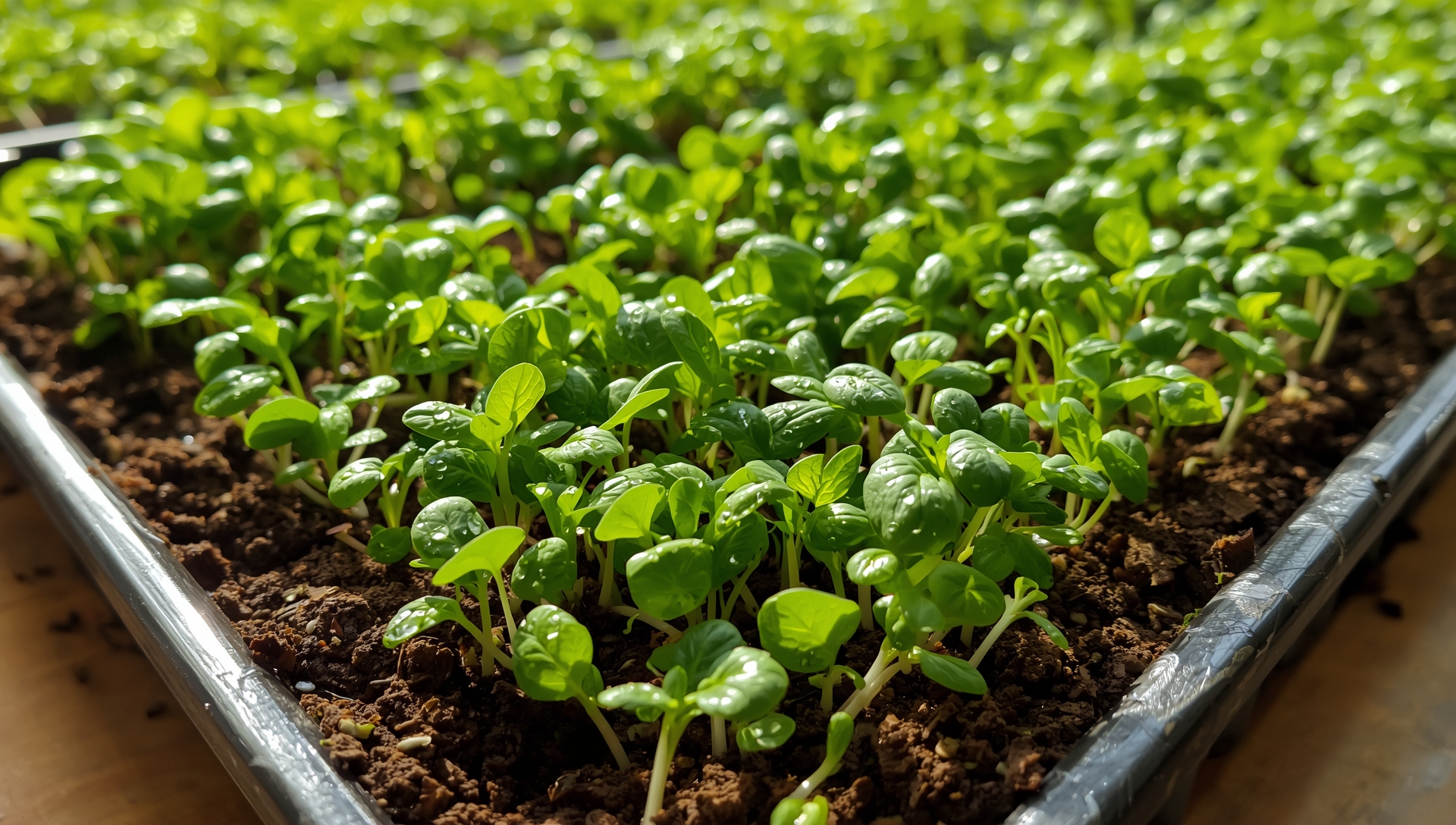The best soil mix for growing microgreens is a combination of coco coir, compost, and perlite or vermiculite. This blend provides excellent aeration, nutrient content, and water retention, helping seeds germinate evenly and grow healthy microgreens.
Introduction: Why Soil Mix Matters
Microgreens need light, well-draining soil to thrive. Using the right soil ensures proper moisture retention while allowing roots to breathe. Poor soil can lead to slow germination, weak sprouts, or mold. Indoor growing makes this even more important, as shallow trays can dry quickly or retain too much water.
A proper soil mix improves:
- Seed germination rate
- Root development
- Stem strength and leaf color
- Overall yield and flavor
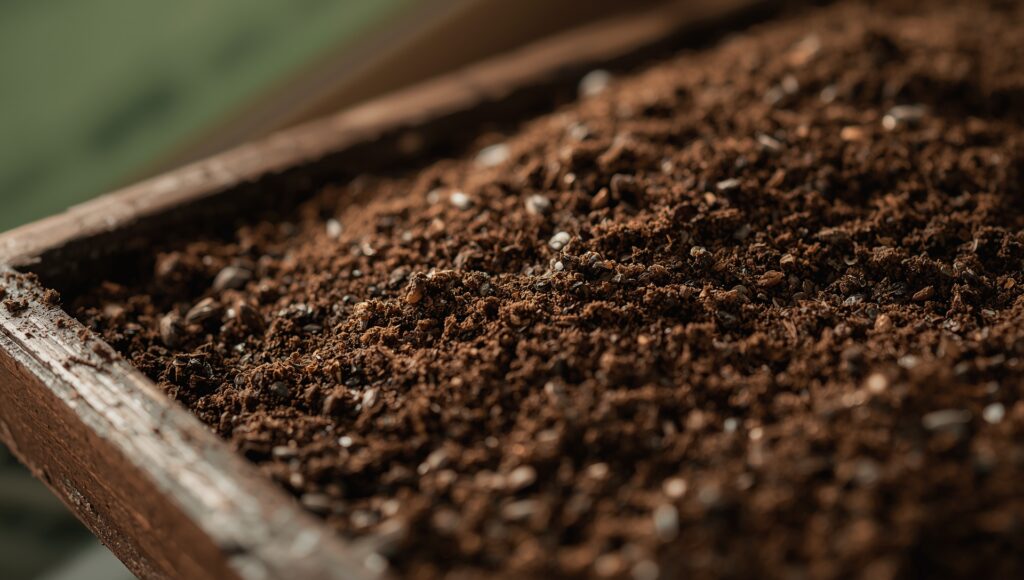
Ingredients for the Best Soil Mix
- Coco Coir: Retains moisture while allowing good aeration.
- Compost: Provides essential nutrients for seedlings.
- Perlite or Vermiculite: Improves drainage and prevents soil compaction.
Typical ratio: 50% coco coir, 40% compost, 10% perlite or vermiculite. Adjust depending on indoor conditions and seed type.
Optional Additives
- Worm Castings: Boost nutrients naturally.
- Organic Fertilizers: Can be added sparingly for faster growth.
- Sand (coarse): Adds extra drainage for heavy seeds like sunflower.
Preparing the Soil
Moisten the soil lightly before filling trays. Spread evenly in shallow trays about 1–2 inches deep. Press lightly to level but don’t compact the soil. Compacted soil prevents root expansion and slows growth.
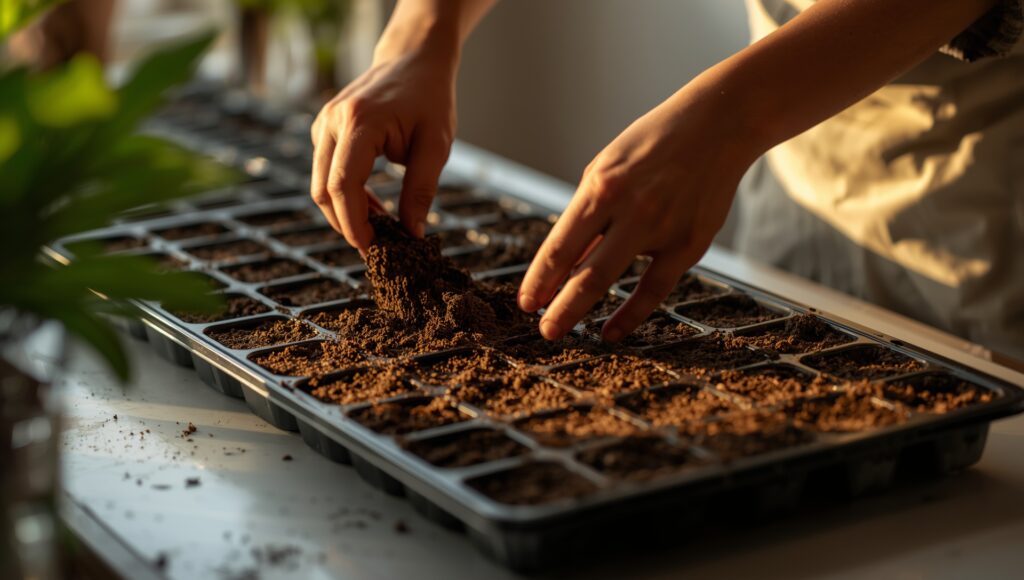
Day-Wise Soil Care for Microgreens
Day 1–3: Keep soil evenly moist while seeds germinate. Mist lightly twice daily if needed. Avoid soaking the soil.
Day 4–7: Once sprouts appear, continue misting to maintain moisture. Ensure proper airflow to reduce mold risk.
Day 8–10: Microgreens grow rapidly. Check soil daily to prevent drying out. Use shallow bottom watering if surface appears dry.
How Soil Mix Affects Microgreen Growth
A balanced soil mix ensures:
- Even and fast germination
- Strong, upright stems
- Vivid green leaves
- Reduced risk of mold or diseases
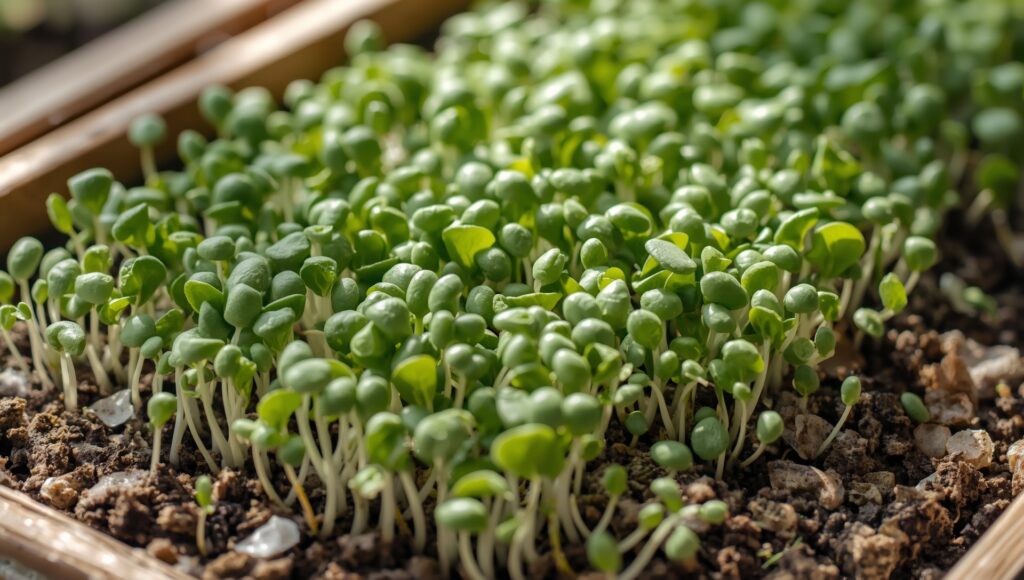
Troubleshooting Soil Issues
Mold: Overwatering or poor airflow. Reduce watering, increase ventilation, remove affected sprouts.
Slow Growth: Check nutrient content; add compost or worm castings if needed.
Soil Compaction: Loosen the top layer before sowing seeds.
Uneven Germination: Ensure seeds are in full contact with soil; lightly press without overcompacting.
Advanced Soil Preparation Tips
- Pre-moisten coco coir to avoid uneven hydration.
- Mix compost thoroughly to avoid nutrient pockets.
- Sift perlite to prevent clumps.
- Keep soil at room temperature before sowing seeds.
Storage and Reuse
After harvesting microgreens, soil can be reused if free from mold or pests:
- Mix with fresh coco coir and compost for next batch.
- Compost completely if soil quality deteriorates.
- Avoid reusing soil from trays with mold or pest infestation.
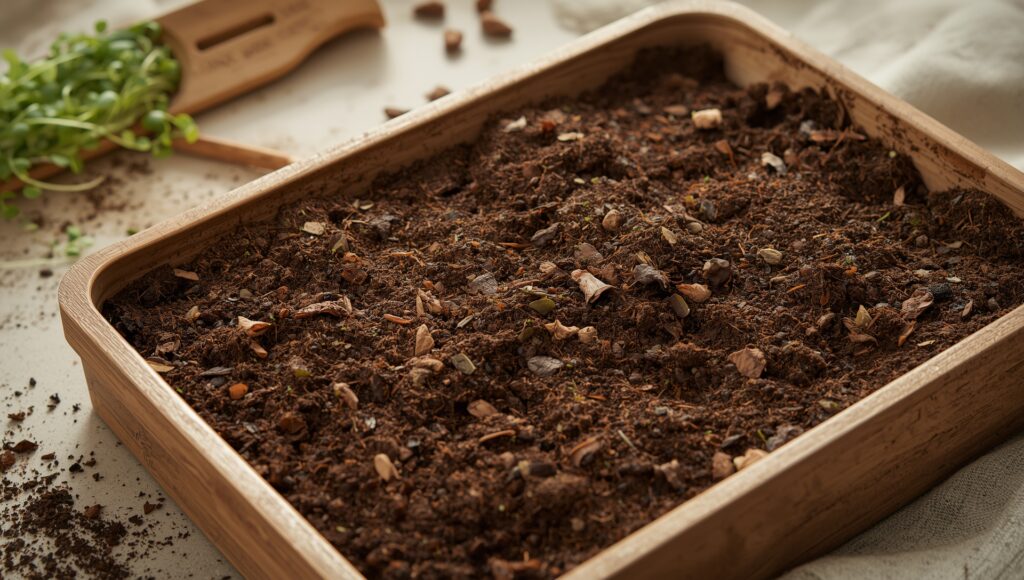
Benefits of Using the Right Soil Mix
- Faster germination and stronger sprouts
- Reduced risk of mold and diseases
- Better yield and nutrient content
- Easier to maintain moisture and drainage
Frequently Asked Questions
Q1: Can I use garden soil for microgreens?
No, garden soil is too dense and may contain pests. A light mix of coco coir, compost, and perlite is best.
Q2: How often should I water soil in trays?
Keep soil consistently moist. Mist 1–2 times daily or water lightly from the bottom.
Q3: Can I reuse soil after harvesting?
Yes, only if it’s free from mold or pests. Mix with fresh coco coir and compost before reuse.
Q4: Do microgreens need fertilizers in soil?
Generally no, seeds contain enough nutrients for the short growth cycle. Add organic fertilizers sparingly if needed.
Q5: Which microgreens grow best in this soil mix?
Almost all varieties, including radish, sunflower, broccoli, and pea shoots, thrive in this soil.
Q6: Can I grow microgreens in hydroponic mats instead of soil?
Yes, mats are an alternative, but using a soil mix gives better flavor and nutrition for most varieties.
Q7: How to avoid compacted soil in shallow trays?
Lightly fluff the soil before sowing seeds and press gently without compressing it.
Final Thoughts
A well-balanced soil mix is the foundation of healthy microgreens. Using coco coir, compost, and perlite/vermiculite ensures fast germination, strong growth, and flavorful, nutritious greens. Maintain proper moisture, watch for mold, and prepare soil carefully for the best results. By investing time in soil preparation, you can enjoy consistent, high-quality microgreen harvests every week.

